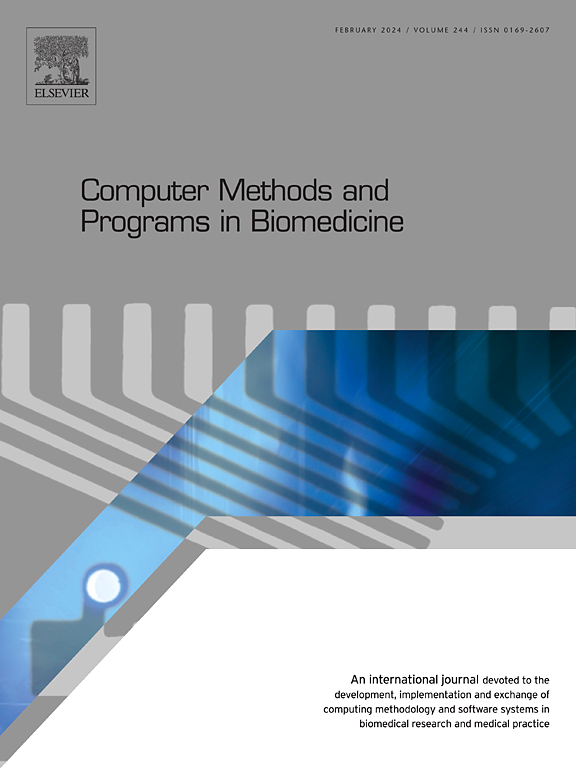基于可逆神经网络的血糖控制的双向推理方法
IF 4.8
2区 医学
Q1 COMPUTER SCIENCE, INTERDISCIPLINARY APPLICATIONS
引用次数: 0
摘要
背景和目的:尽管深度学习模型在许多领域取得了长足的进步,但它们学习虚假相关性的倾向严重阻碍了它们在需要因果和反事实推理的任务中的适用性。方法:在本文中,我们提出了一个双向神经网络,创新地将正向因果推理与反向反事实推理整合成一个内聚框架。这种集成是通过实现多堆叠仿射耦合层来实现的,这确保了网络的可逆性,从而在单一的体系结构构造中实现双向推理能力。为了增强网络的可训练性和保证参数的双向可微性,我们引入了正交权归一化技术。此外,双向神经网络的反事实推理能力被嵌入到强化学习的策略功能中,从而有效地解决了血糖控制场景中与奖励稀疏性相关的挑战。结果:我们评估了我们的框架在两个关键任务:基于因果的血糖预测和基于反事实的血糖控制。实证结果证实,我们的模型不仅体现了因果推理的增强泛化,而且在处理分布外数据方面也显著优于比较模型。此外,在血糖控制任务中,反事实推理的整合显著提高了决策效率、样本效率和收敛速度。结论:我们期望双向神经网络将为探索因果和反事实推理开辟新的途径,从而为复杂的决策过程提供开创性的方法。代码可从https://github.com/HITshenrj/BNN获得。本文章由计算机程序翻译,如有差异,请以英文原文为准。
A bidirectional reasoning approach for blood glucose control via invertible neural networks
Background and Objective
: Despite the profound advancements that deep learning models have achieved across a multitude of domains, their propensity to learn spurious correlations significantly impedes their applicability to tasks necessitating causal and counterfactual reasoning.
Methods:
In this paper, we propose a Bidirectional Neural Network, which innovatively consolidates forward causal reasoning with inverse counterfactual reasoning into a cohesive framework. This integration is facilitated through the implementation of multi-stacked affine coupling layers, which ensure the network’s invertibility, thereby enabling bidirectional reasoning capabilities within a singular architectural construct. To augment the network’s trainability and to ensure the bidirectional differentiability of the parameters, we introduce an orthogonal weight normalization technique. Additionally, the counterfactual reasoning capacity of the Bidirectional Neural Network is embedded within the policy function of reinforcement learning, thereby effectively addressing the challenges associated with reward sparsity in the blood glucose control scenario.
Results:
We evaluate our framework on two pivotal tasks: causal-based blood glucose forecasting and counterfactual-based blood glucose control. The empirical results affirm that our model not only exemplifies enhanced generalization in causal reasoning but also significantly surpasses comparative models in handling out-of-distribution data. Furthermore, in blood glucose control tasks, the integration of counterfactual reasoning markedly improves decision efficacy, sample efficiency, and convergence velocity.
Conclusion:
It is our expectation that the Bidirectional Neural Network will pave novel pathways in the exploration of causal and counterfactual reasoning, thus providing groundbreaking methods for complex decision-making processes. Code is available at https://github.com/HITshenrj/BNN.
求助全文
通过发布文献求助,成功后即可免费获取论文全文。
去求助
来源期刊

Computer methods and programs in biomedicine
工程技术-工程:生物医学
CiteScore
12.30
自引率
6.60%
发文量
601
审稿时长
135 days
期刊介绍:
To encourage the development of formal computing methods, and their application in biomedical research and medical practice, by illustration of fundamental principles in biomedical informatics research; to stimulate basic research into application software design; to report the state of research of biomedical information processing projects; to report new computer methodologies applied in biomedical areas; the eventual distribution of demonstrable software to avoid duplication of effort; to provide a forum for discussion and improvement of existing software; to optimize contact between national organizations and regional user groups by promoting an international exchange of information on formal methods, standards and software in biomedicine.
Computer Methods and Programs in Biomedicine covers computing methodology and software systems derived from computing science for implementation in all aspects of biomedical research and medical practice. It is designed to serve: biochemists; biologists; geneticists; immunologists; neuroscientists; pharmacologists; toxicologists; clinicians; epidemiologists; psychiatrists; psychologists; cardiologists; chemists; (radio)physicists; computer scientists; programmers and systems analysts; biomedical, clinical, electrical and other engineers; teachers of medical informatics and users of educational software.
 求助内容:
求助内容: 应助结果提醒方式:
应助结果提醒方式:


